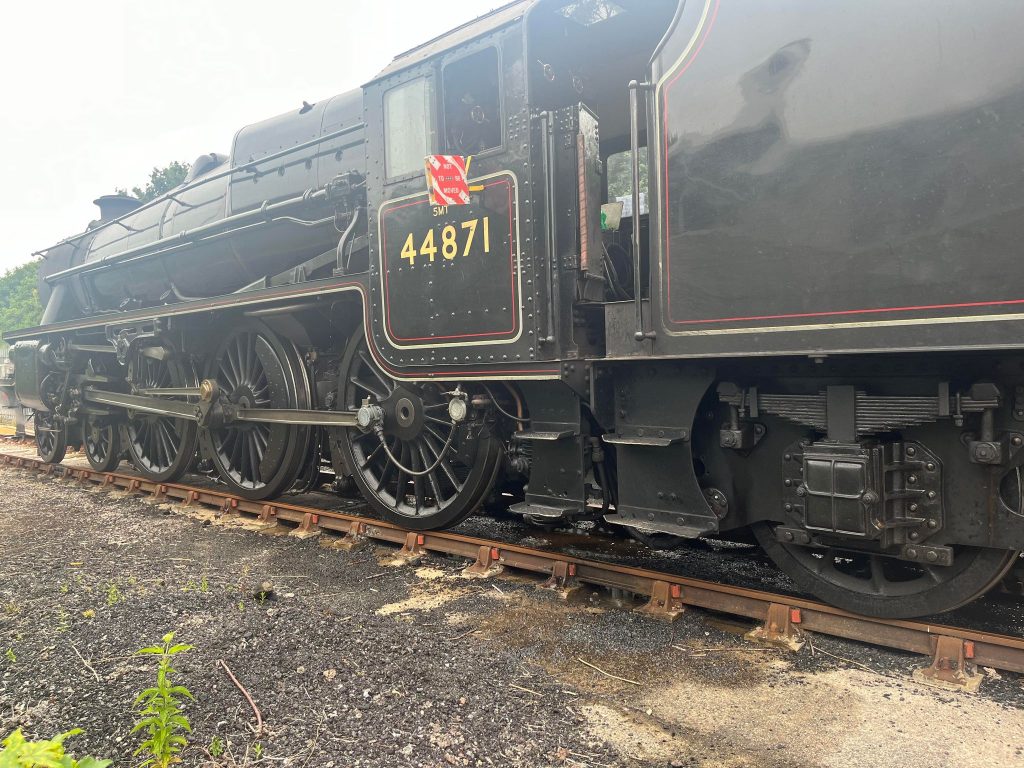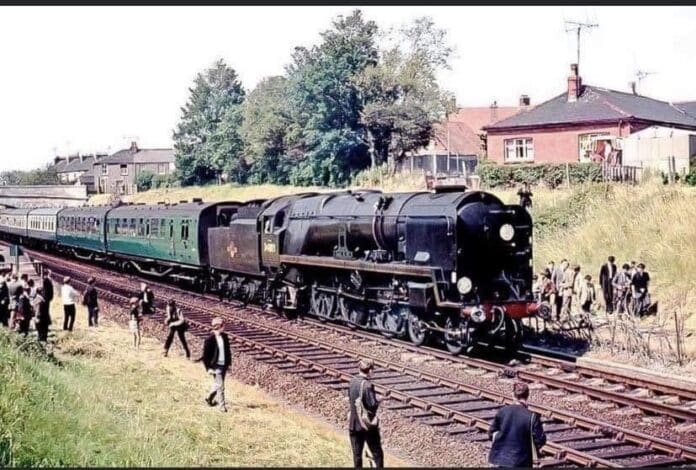The county of Dorset, with its picturesque landscapes and rich historical heritage, has a fascinating history with steam trains. This history is deeply intertwined with the broader development of the railway network in the United Kingdom during the 19th and 20th centuries. From the arrival of the first steam locomotive in the region to the preservation efforts seen today, Dorset’s steam railway history is a tale of innovation, progress, and nostalgia.
Early Beginnings
The introduction of steam trains in Dorset began in the mid-19th century, during the railway boom that swept across Britain. The Great Western Railway (GWR) and the London and South Western Railway (LSWR) were the primary companies responsible for developing the rail infrastructure in Dorset.
The first significant milestone was the opening of the Dorchester to Weymouth line by the Great Western Railway in 1857. This line connected the county town of Dorchester to the coastal resort of Weymouth, facilitating both passenger travel and the transport of goods. The introduction of steam trains revolutionised travel and commerce in the region, reducing travel times and increasing the efficiency of transporting goods.
Expansion and Development
Following the success of the Dorchester to Weymouth line, further expansions took place. The LSWR extended its network into Dorset, opening lines that connected the county to major cities like London and Bristol. Notable among these was the opening of the Somerset and Dorset Joint Railway (S&DJR) in 1862, which connected Bath to Bournemouth, passing through the heart of Dorset. This line became famous for its scenic beauty and challenging gradients.
The arrival of the railway brought significant economic benefits to Dorset. Market towns such as Blandford Forum, Wareham, and Shaftesbury saw increased trade and tourism. The ease of travel encouraged the development of seaside resorts, with towns like Swanage and Lyme Regis becoming popular holiday destinations.
The Golden Age
The period from the late 19th century to the early 20th century is often considered the golden age of steam railways in Dorset. During this time, steam trains were the primary mode of transport, and the railways were bustling with activity.
Trains such as the ‘Pines Express’ and the ‘Atlantic Coast Express’ became iconic, offering luxurious and efficient travel across the country. The S&DJR, with its picturesque route through the Dorset countryside, gained a reputation for being one of the most beautiful railway lines in Britain.
Decline and Closure
The decline of steam trains in Dorset, as in the rest of the UK, began in the mid-20th century. The advent of diesel and electric trains, coupled with the rise of automobile travel, led to a gradual reduction in the use of steam locomotives. The infamous Beeching cuts of the 1960s, aimed at reducing the financial losses of the British railway network, resulted in the closure of many branch lines and stations in Dorset.
One of the most significant closures was that of the Somerset and Dorset Joint Railway in 1966. The loss of this scenic line was a considerable blow to steam enthusiasts and marked the end of an era for many communities in Dorset.
Preservation and Heritage Railways
Despite the decline of steam trains in regular service, the spirit of the steam era has been kept alive through preservation efforts. Heritage railways have become a significant part of Dorset’s tourism industry, attracting enthusiasts and tourists alike.
The Swanage Railway is a prime example of successful preservation. This heritage railway operates steam trains on a restored section of the old LSWR line between Norden and Swanage. It offers a nostalgic journey through the stunning Purbeck countryside, providing visitors with a glimpse into the past.
The Yeovil Railway Centre, located just outside Dorset, also plays a vital role in preserving the region’s railway heritage. It hosts steam galas and events, offering rides on steam locomotives and showcasing the history of steam trains in the area.
The history of steam trains in Dorset is a testament to the transformative power of the railway. From their introduction in the 19th century to their decline in the mid-20th century and subsequent preservation, steam trains have left an indelible mark on the county. Today, heritage railways ensure that the legacy of steam continues to be celebrated, offering a nostalgic journey through Dorset’s beautiful landscapes and rich history.
The Timeless Allure of Steam Trains
Despite the advancements in transportation technology and the shift towards high-speed electric and diesel trains, steam trains continue to hold a special place in the hearts of many. Their enduring appeal transcends generations, captivating both young and old. But what is it about these relics of the past that still fascinates so many?



Nostalgia and Heritage
For many, steam trains evoke a sense of nostalgia, a connection to a bygone era when travel was as much about the journey as it was about the destination. These magnificent machines remind people of simpler times, often associated with childhood memories, family trips, and the golden age of rail travel. The sight and sound of a steam train can transport individuals back to these cherished moments, providing a tangible link to the past.
Moreover, steam trains are an integral part of cultural heritage. They symbolise the industrial revolution, a period of significant technological and social change. Preserving and celebrating these machines helps keep history alive, allowing people to appreciate the engineering marvels of the past and understand the evolution of transportation.
Engineering and Craftsmanship
Steam locomotives are masterpieces of engineering and craftsmanship. Unlike modern trains, which often prioritise efficiency and speed, steam trains were designed with intricate detail and mechanical precision. Enthusiasts marvel at the complexity of their design, from the roaring fireboxes and massive driving wheels to the labyrinth of pipes and valves that power these iron horses.
The maintenance and operation of steam locomotives require specialised skills and knowledge, making them a fascinating subject for those interested in engineering. Heritage railways and museums often offer behind-the-scenes tours and workshops, providing a deeper understanding of how these machines work and the dedication required to keep them running.
The Sensory Experience
One of the most compelling reasons people love steam trains is the sensory experience they offer. The sight of a steam locomotive chugging along the tracks, billowing clouds of smoke and steam, is a dramatic and captivating spectacle. The sound of the engine’s rhythmic chuffing, the whistle’s nostalgic call, and the clanking of metal create a symphony that is both powerful and soothing.
Riding a steam train is a multi-sensory adventure. The smell of coal and steam, the warmth of the boiler, and the vibrations of the train as it moves along the tracks all contribute to an immersive experience that is unique and exhilarating. This sensory richness is something modern trains, with their smooth, quiet rides, simply cannot replicate.
Community and Camaraderie
The world of steam trains fosters a strong sense of community and camaraderie among enthusiasts. Heritage railways, museums, and preservation societies are often run by dedicated volunteers who share a passion for these historic machines. They work tirelessly to restore and maintain locomotives, organise events, and educate the public about the importance of steam railways.
For many, being part of this community is a rewarding experience. It provides an opportunity to connect with like-minded individuals, share knowledge and stories, and contribute to the preservation of railway heritage. Events such as steam galas, where multiple locomotives are in operation, are social occasions that bring together enthusiasts from all over the world.
Educational Value
Steam trains also serve as valuable educational tools. They offer insights into the history of transportation, the industrial revolution, and the technological advancements of the 19th and early 20th centuries. For younger generations, steam trains provide a tangible connection to historical events and societal changes they might only read about in textbooks.
Many heritage railways and museums offer educational programs and interactive exhibits designed to engage children and adults alike. These programs often include hands-on activities, such as learning how to operate a steam engine or understanding the principles of steam power, making history come alive in a way that is both fun and informative.
The enduring love for steam trains is a testament to their unique place in our cultural and historical landscape. Whether it is the nostalgia they evoke, the marvel of their engineering, the rich sensory experience they provide, or the sense of community they foster, steam trains continue to captivate and inspire. As symbols of a bygone era and a celebration of human ingenuity, they remind us of the journeys taken and the progress made, ensuring that the legacy of steam lives on for future generations to appreciate and enjoy.
KEEP US ALIVE and join us in helping to bring reality and decency back by SUBSCRIBING to our Youtube channel: https://www.youtube.com/channel/UCQ1Ll1ylCg8U19AhNl-NoTg AND SUPPORTING US where you can: Award Winning Independent Citizen Media Needs Your Help. PLEASE SUPPORT US FOR JUST £2 A MONTH https://dorseteye.com/donate/







